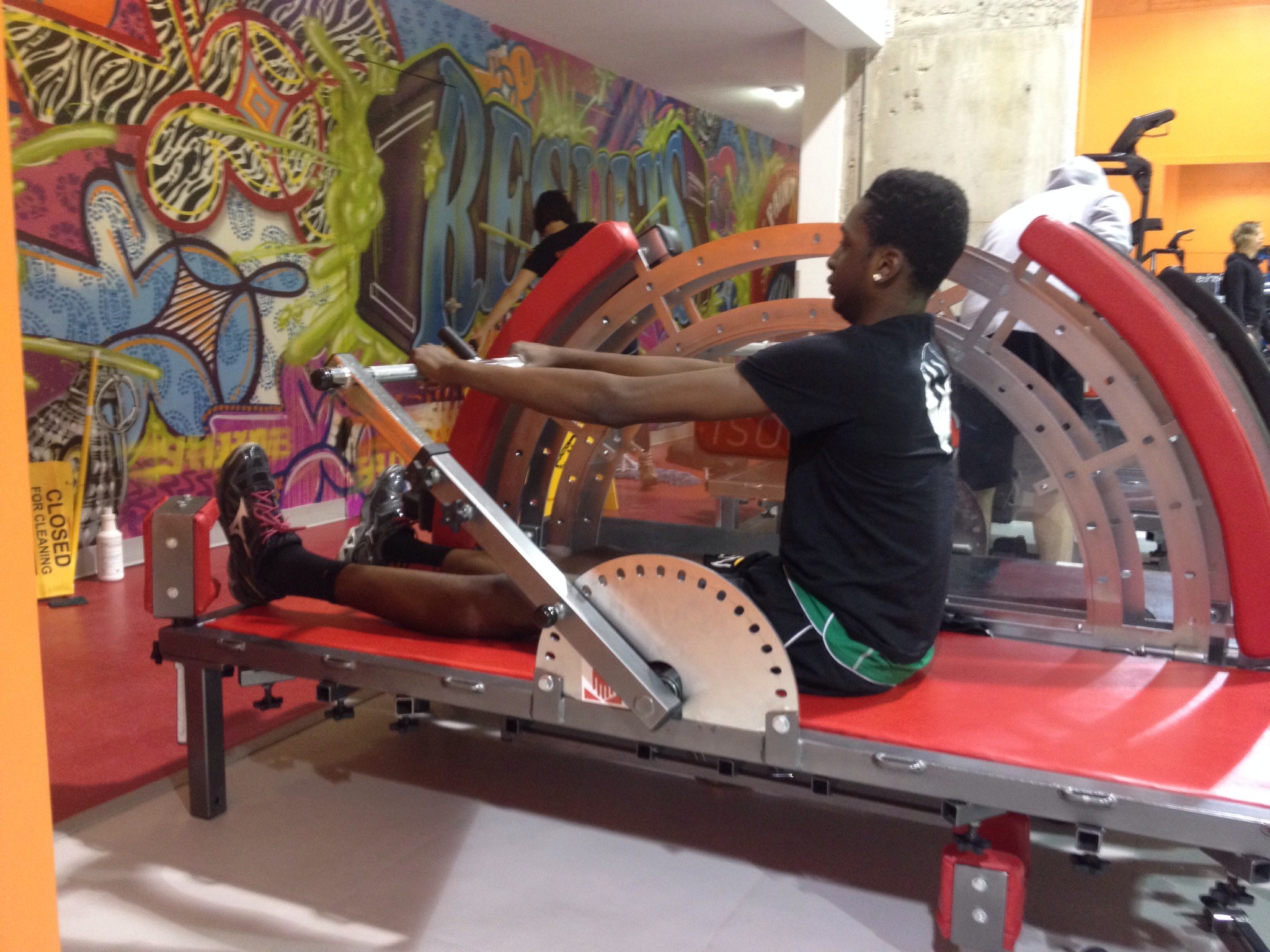Common Injuries of Volleyball Players

Today, there are two types of volleyball sports – indoor volleyball and beach volleyball. It’s important to know that both indoor and beach volleyball have been introduced to the Summer Olympic Games. Despite the fact that beach volleyball is relatively new sport, it is actively developing and has quickly risen in popularity.
Like many other sports, indoor and beach volleyball sports have the risks of getting some injuries. For example, volleyball players suffer from knee problems of different kinds during their sport career. Some volleyball injuries also affect the joints of elbows and shoulders. A lot of volleyball athletes suffer from lower back pain as well. It is worth noting that volleyball injuries are more common in adults rather than in young athletes. However, some injuries can occur in young volleyball players as well.
The Statistics of Common Injuries in Volleyball Players
The statistical data shows that 35.6% of all injuries in volleyball players are ankle and feet injuries; 16.2% of all injuries in volleyball players are hip and leg injuries; 15.8% of all injuries in volleyball players are injuries of forearm injuries, hand injuries as well as wrist injuries. About 48.6% of most common injuries of volleyball players are injuries to muscles. Injuries to ligaments or joints are about 25.5%.
The Reasons of Getting Injuries in the Sport of Volleyball
In fact, there are many reasons for which volleyball players have to deal with different types of injuries. These are the improper training techniques, overusing certain movements during the game or practice, the lack of effective injury prevention programs as well as low quality playing surface. Today, we will tell readers about the common types of injuries in volleyball players.
Hand Injuries
Those volleyball players, who are responsible for blocking and setting, often suffer from hand injuries of different types. When blocking and setting the ball volleyball players can damage their fingers and toes. Sprains and strains are also common hand injuries among volleyball players. Ligament in the hand can be damaged as well.
The list of common finger injuries in volleyball players includes the following: dislocations, joint sprains as well as tendon tears. X-rays are successfully used for indicating as well as evaluating different types of finger injuries these days.
Lower Back Pain
It’s not a surprise that a lot of volleyball players experience lower back pain. That is why lower back pain is considered to be one of the most common injuries in volleyball players. The point is that volleyball players frequently rotate and bend their trunk during the game or practice.
It is worth noting that hitting and setting movements also have a major impact on the bones of the lower back. For this reason those volleyball players, who are responsible for hitting and setting during the game, often experience low back pain.
Luckily to all of volleyball players, medications for treating lower back pain are widely available at the moment. For example, the modern anti-inflammatory medications work perfectly and provide excellent results in treating lower back pain.
Doing light stretching exercises as well as strengthening exercises also helps volleyball players reduce lower back pain. In some cases, volleyball players suffering from lower back pain are recommended to take advantage of chiropractic visits.
Back Injuries
According to the statistics, back injuries of different types are about 14% of all volleyball injuries. There is no question that every volleyball player gets involved into such activities as bending backwards, jumping as well as twisting.
Without a doubt, activities like these ones negatively affect the back of a volleyball player and pose the risk of getting back injuries. Obviously, back injuries are a serious problem for any volleyball player. So, if a player gets back injury during the game of volleyball or practice the help of a highly experienced therapist will be required.
Ankle Injuries
As it was mentioned above, ankle injuries are one of the most common injuries in volleyball players. Volleyball players often suffer from different types of ankle strains from time to time. Sometimes ankle injury occurs when one player lands onto the foot of another player.
It is incredibly important for a volleyball player to recover from ankle injury properly. A player should continue practicing volleyball drills and participating in the games only after the ankle injury is treated properly and recovery period ends.
Knee Injuries
Volleyball athletes may also have knee injuries during their career. It is worth noting that knee injuries of any type are a big problem for any volleyball player. It’s important to know that knee injuries require special treatment that includes special stretching and strengthening exercises.
In some cases, patients may also need to undergo surgery for having the ligament reconstructed. Volleyball players, who have suffered from knee injuries, are usually recommended to avoid different kinds of jumping activities as long as the recovery period takes place.
The problem is that it takes a lot of time for an athlete to recover from knee injury. That is why volleyball players usually find it difficult to return back to the sport after having knee trauma. It goes without saying that knee injuries cause a lot of damage and stress to volleyball players. So, the training programs of many volleyball teams are usually focused on helping volleyball players prevent any kind of knee injuries.
Shoulder Injuries
Shoulders of a volleyball player are actively used during the game. For example, volleyball players use shoulders when blocking attacks, serving as well as spiking the ball during the game. So, this often results in shoulder injuries as well as severe shoulder pain.
Excessive shoulder movement and overusing the rotator cuff muscles are known to be the main causes of shoulder injuries among volleyball players. Despite the fact that shoulder injuries more frequently occur in adults than in young athletes, it is one of the most common injuries of volleyball players.
The muscles of rotator cuff (such as infraspinatus, teres minor and supraspinatus muscles) are responsible for controlling rotation of the volleyball player’s shoulders. Tearing or straining the rotator cuff in the shoulder is considered to be one of the most common and serious shoulder injuries among volleyball players. It is worth noting that it takes some time for the rotator cuff injury to develop. If a patient doesn’t get effective treatment in time rotator cuff injuries can turn into a chronic disease over the time.
Without a doubt, preventing rotator cuff injury is much easier than treating it. Doing strengthening exercises is considered to be an effective way of preventing shoulder injuries from happening. Volleyball players with rotator cuff injuries are recommended to limit overhead motions. Anti-inflammatory medications and ice work well for treating rotator cuff injuries. If a volleyball player gets rotator cuff injury it is reasonable to get the consultation of a sports medicine specialist. Players shouldn’t return to sport quickly after getting the treatment.
Tendonitis
A lot of volleyball players (both adults and young players) also suffer from tendonitis. That’s why tendonitis is known as one of the most common injuries among volleyball players. This problem usually occurs when a volleyball player makes certain movements during the game or practice many times. Muscular imbalances are another cause of tendonitis. Tendonitis can be found in the back, elbows, shoulders as well as wrists of volleyball players.
In most cases, volleyball players don’t find it difficult to recover from tendonitis. So, players usually return back to the sport of volleyball after tendonitis quickly. Anti-inflammatory drugs as well as compressions and ice work perfectly in treating tendonitis. Moreover, players should have rest while recovering from the injury.
Rehabilitation and strengthening of the affected area is required as well. However, there are also more difficult cases of tendonitis. Thus, a patient may need to get special injections or even undergo surgery procedure in order to treat tendonitis effectively.
Check PAKMEN’s High Performance Volleyball programs |
Check PAKMEN’s Beach Volleyball programs |

